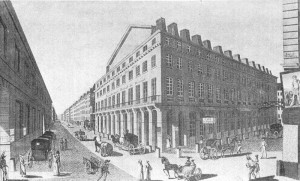A Community for Curious Minds who love History, its Odd Stories, and Good Reads
A Community for Curious Minds who love History, its Odd Stories, and Good Reads
By Holly Tucker
 It has become common to think of the time before automobiles as a kind of Eden for Western cities: no pollution, no congestion, no costly parking or maintenance, no noise. But anyone who has written about cites in the pre-industrial era knows differently. Before cars, trains, and tramways, all goods and people were transported by horse-drawn vehicles, and their sheer numbers caused problems that we can scarcely imagine.
It has become common to think of the time before automobiles as a kind of Eden for Western cities: no pollution, no congestion, no costly parking or maintenance, no noise. But anyone who has written about cites in the pre-industrial era knows differently. Before cars, trains, and tramways, all goods and people were transported by horse-drawn vehicles, and their sheer numbers caused problems that we can scarcely imagine.
